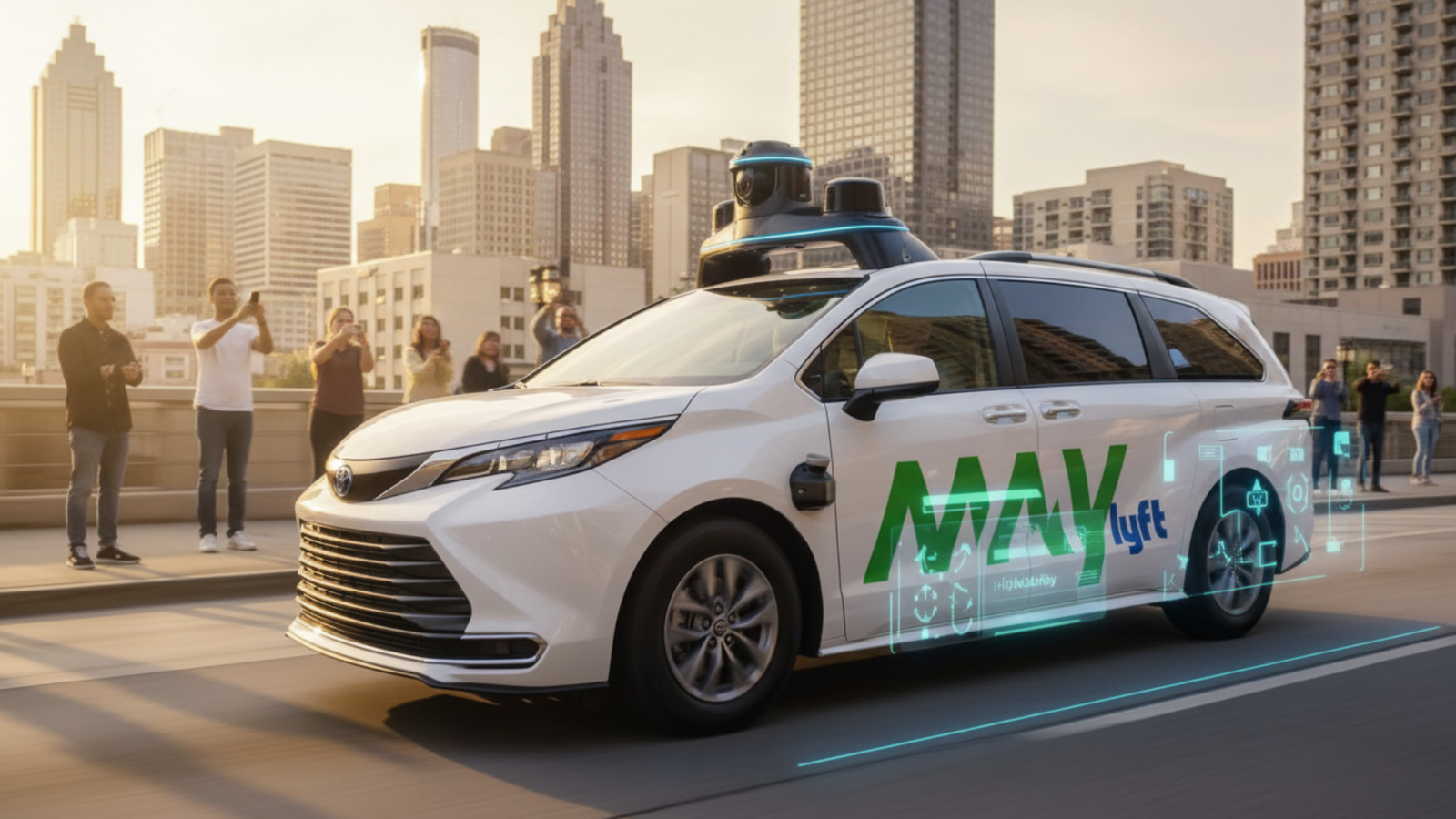
Technology & Mobility
Partnership marks companies' first commercial deployment of Toyota Sienna hybrid-electric fleet
The robotaxi revolution is advancing in the United States. Starting this Tuesday, passengers in Atlanta can request a May Mobility robotaxi through the Lyft app, marking the first commercial deployment of the partnership between the two companies. This launch represents Lyft's latest attempt to gain a foothold in the competitive autonomous vehicle market.
How the New Service Works in Atlanta
The pilot service operates with a small initial fleet of Toyota Sienna Autono-MaaS hybrid-electric vehicles, with limited operating hours and a human safety operator in the front seat during this first phase. The technological innovations implemented make this one of the most advanced services in the sector.
- Area of operation: Midtown Atlanta
- Schedule: Morning to afternoon rush hours, Monday through Friday
- Planned expansion: Evenings and weekends coming soon
- Availability: Rides on demand or through the "Wait & Save" feature
- Safety: Human safety operators present who can take control when needed
A company spokesperson said that Lyft and May Mobility plan to expand to "dozens, then hundreds and eventually thousands" of vehicles over time in multiple markets.
Fierce Competition in the Atlanta Market
The launch of the Lyft-May Mobility partnership faces direct competition. Uber and Waymo have already begun offering fully autonomous rides in Atlanta since June, putting Lyft in a position where it needs to catch up in the local market. Autonomous vehicle expansion has been among the most aggressive developments in the industry.
Analysts at Bank of America even downgraded Lyft's stock from "Buy" to "Underperform" due to concerns that the company would lose market share to Waymo's expansion in California and Uber's aggressive strategy of autonomous vehicle partnerships.
However, analyst sentiment improved after Lyft reported solid earnings in the second quarter, and the launch of a fleet of robotaxis could help sustain this momentum. AI technologies applied to autonomous transportation continue to evolve rapidly.
Lyft's Multiple Partnership Strategy
The company is diversifying its bets on the autonomous vehicle market through various strategic partnerships. This approach reflects the latest technological trends in the mobility sector:
- May Mobility: Current launch in Atlanta
- Baidu: Agreement to launch robotaxis in Europe next year
- Mobileye: Deployment of vehicles equipped with Mobileye technology in Dallas "by 2026", with "thousands more AVs in other cities to follow"
Lessons from the Past: Partnerships That Didn't Prosper
Lyft has previous experience with autonomous vehicle partnerships that didn't work out:
- ×Motional in Las Vegas: Robotaxi service (always with safety driver) paused in May 2024 after Motional drastically cut its workforce
- ×Argo AI: Similar partnership in Austin and Miami terminated when Argo AI closed in 2022, resulting in a loss of $135.7 million for Lyft, which had a stake in the company
Uber's Competitive Advantage
While Lyft works to establish its presence in the robotaxi market, rival Uber has already built an extensive network. The company has assembled 20 global autonomous vehicle partners across its passenger transport, delivery, and freight businesses, which according to the company have already generated an annualized rate of 1.5 million mobility and delivery trips.
Interestingly, May Mobility is also a partner with Uber. The two companies plan to launch robotaxis in Arlington, Texas later this year as part of a multi-year partnership. This competition is driving the development of specialized urban mobility applications.
May Mobility's Profile
For May Mobility, the launch in Atlanta marks its second operation in Georgia. The company already operates a limited commercial autonomous microtransport service in Peachtree Corners. Sustainable transportation solutions are a growing priority in the industry.
Main focus: autonomous buses in low-traffic environments
Operation: geo-fenced areas with designated stops
Active commercial services (with human safety operators) in:
- Grand Rapids, Minnesota
- Martinez, California
- Tokyo port region, Japan
Lyft's Challenge in the Robotaxi Market
Lyft's launch signals an effort to capture a share of the robotaxi market, but the company has significant ground to make up if it hopes to close the gap with rival Uber. The debut is modest—a small fleet, limited operating hours, and still with safety operators—especially considering that it's entering a city where competitors already offer fully autonomous services. Digital security concerns remain fundamental in the development of these systems.
Future Prospects
Lyft's deployment with May Mobility comes a month after the company announced a deal with China's Baidu to launch robotaxis in Europe next year. Lyft CEO David Risher also confirmed that the company will work with Mobileye to deploy vehicles equipped with Mobileye technology in the Lyft app in Dallas.
This strategy of multiple partnerships could be the key to Lyft avoiding the problems it has faced in the past with single suppliers of autonomous technology. The future of connectivity technologies promises even more advances for connected vehicles.
Conclusion: A Cautious Start Towards the Future
The launch in Atlanta represents an important but cautious step by Lyft into the robotaxi market. Although the debut is modest compared to established competitors, it marks the beginning of a broader strategy of multiple partnerships that could better position the company for the future of autonomous transportation.
The success of this partnership with May Mobility will be crucial in determining whether Lyft can regain lost ground and establish a significant presence in the revolutionary robotaxi market. To stay up to date with the latest technology news and mobility innovations, keep following Info7Now.


Comments
Leave your comment
Be the first to comment!
Share your opinion about this article.